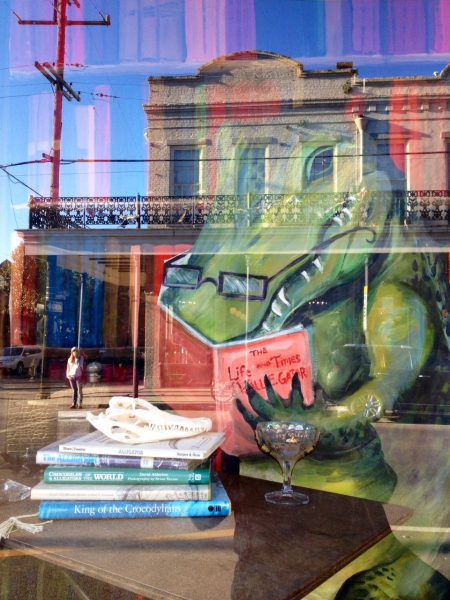How did this story take shape? This story is so strange, but so sweet. I’m so curious about its origins.
When we describe parenting, it seems there’s a focus placed on referencing the drudgery of the job, the quotidian aspects—endless diapers, endless feedings, endless exhaustion—as if that’s all the role and journey is comprised of. If it’s not that, it’s vague mysticism. So I think I was thinking about the Homeric within the quotidian in the story: the epic quests and lengths parents will go to, and the trials they will endure, to procure one wanted item for their child, or solve one seemingly minor problem.
I love that a piece with Homeric goals ended up being a flash piece. Did you venture out intending to keep this piece so compressed, even down to the shape of the prose on the page?
I did aim to keep it compressed, and a work of flash fiction, although I in no way imagined it would wind up in the 500-word range. The prose took its shape after the initial bursts and drafting: very much a “form follows function” experience.
Well, and getting the perfect haircut sometimes feels like composing that perfect little story. It’s nearly chimerical. You can envision what you want, but the proper execution depends on choosing that very perfect word, the perfect cut. Which begs the question: how does the wig factor into this metaphor? Or better yet, how did this story arrive upon the wig as the solution to the unique problem set upon this narrator?
I like the way you frame that, the story arriving “upon the wig as the solution.” In writing this, I was drawing from one of my daughters, who liked to fall asleep stroking my arm hair. Later she turned to stuffed animals (which made my forearms feel slightly jilted, let me tell you!). But it got me thinking how we’re perpetually sleeping with something or someone, from the start, whether it’s a parent’s cradling reassurance, a stuffed animal, friends at a sleepover party, and finally, a partner or spouse, which brings on, in many cases, a child that sleeps with you and said spouse/partner. The Homeric arc of cyclical intimacy. But forearm hair didn’t feel as…elegant as the hair on a crown. Plus, the hair on a crown can be adjusted and sheared until it achieves, as you say, the perfect cut. It may not surprise you to learn that I’m obsessed with the Brady Udall flash fiction story “The Wig,” which is just rife with emotional masterstrokes.
That really is a fabulous story! Are there any other flash pieces that serve as touchstones for your work?
Maybe not any specific pieces, but I’m continually astounded by what Stuart Dybek achieves with the form, and highly recommend his new book, Ecstatic Cahoots.
Okay, final question: What is your favorite wig in history, real or otherwise?
Such a great question! And it allows me to bring up my mini-obsession with Alexander Hamilton. I should say that “obsession” is somewhat tongue-in-cheek, but only slightly: I’ve written a book about Hamilton (under a nom de plume), and worked very hard to get a B plot featuring our forgotten footnote founding father in a TV sitcom episode. So his wig wins.



 The core workshop of SmokeLong Fitness is all in writing, so you can take part from anywhere at anytime. We are excited about creating a supportive, consistent and structured environment for flash writers to work on their craft in a community. We are thrilled and proud to say that our workshop participants have won, placed, or been listed in every major flash competition. Community works.
The core workshop of SmokeLong Fitness is all in writing, so you can take part from anywhere at anytime. We are excited about creating a supportive, consistent and structured environment for flash writers to work on their craft in a community. We are thrilled and proud to say that our workshop participants have won, placed, or been listed in every major flash competition. Community works.